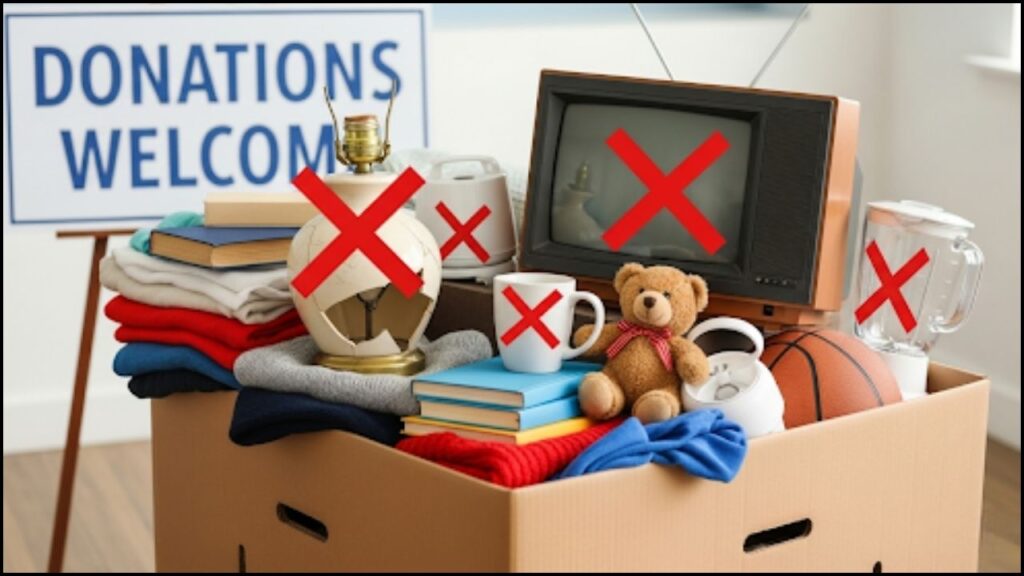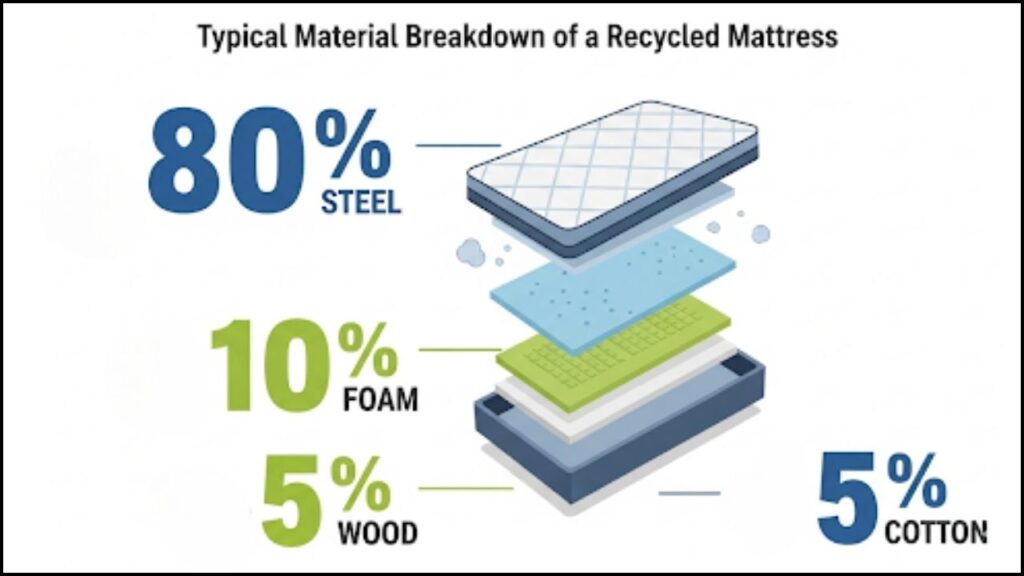Donating used household items to charity is a widespread practice, but not all goods are created equal in the eyes of charitable organizations and professional organizers. While the intention is often to help those in need and reduce waste, experts warn that certain items can become a burden rather than a blessing for nonprofits. A growing consensus among professional organizers highlights common household items you should never donate due to safety concerns, regulatory restrictions, or the sheer cost of processing them.

The primary objective of most donation centers is to collect items that are safe, functional, and can be resold or directly given to individuals. According to Jenna Fischer, a certified professional organizer and founder of Clutter-Free Solutions, accepting damaged or regulated goods diverts valuable resources. “Charities have to spend time and money to dispose of items they can’t use,” Fischer stated. “This effort takes away from their core mission, whether that’s providing housing, food, or job training.”
Items to Reconsider Before Donating
The list of items to avoid donating goes beyond the obvious broken furniture or stained clothing. Many are commonly found in homes, making the need for public awareness critical. These guidelines are based on recommendations from organizations like the Goodwill Industries International and professional organizing bodies.
1. Outdated or Non-Working Electronics
Charities generally do not accept old electronics, including tube televisions, outdated computers, or non-functional printers. These items often contain hazardous materials like lead and mercury, and their disposal is costly and regulated. According to the Environmental Protection Agency (EPA), improper disposal of electronics can harm the environment. Mark Wilson, director of operations at a regional Goodwill, explains that the cost of e-waste recycling often outweighs the potential resale value. “We can’t just throw them in the trash, so we have to pay a licensed recycler to handle them, which is a significant expense,” Wilson said. Instead, consumers are advised to seek out local e-waste recycling events or specialized recycling centers.
2. Old Mattresses and Box Springs
Most charitable organizations and thrift stores have strict policies against accepting used mattresses and box springs due to hygiene and health risks. They can harbor bed bugs, mold, and dust mites, which can spread to other donated goods and pose a health risk to both staff and recipients. In many states, including California and Connecticut, specific laws and recycling programs are in place to manage mattress disposal. The Mattress Recycling Council maintains a list of facilities that can handle these items properly, ensuring their components are recycled rather than sent to landfills.

3. Car Seats and Other Safety Equipment
Donating used car seats is widely discouraged by safety experts. The National Highway Traffic Safety Administration (NHTSA) recommends against their reuse. A car seat’s safety is compromised if it has been in a crash, has an unknown history, is missing parts, or is past its expiration date. Most car seats have a lifespan of six to ten years. The plastic can degrade over time, reducing its crash protection capabilities. Organizations like Safe Kids Worldwide urge parents to check a car seat’s expiration date and dispose of it properly, often through a retailer-sponsored take-back program.
4. Recalled or Broken Children’s Items
Baby furniture like cribs and playpens are frequently subject to safety recalls. Accepting a recalled item, even unknowingly, can expose a charity to significant legal liability and put a child at risk. Additionally, broken toys with small, loose parts or items made with materials that are no longer considered safe, such as lead-based paint, should not be donated. The U.S. Consumer Product Safety Commission (CPSC) maintains a comprehensive database of recalled products that the public can search before considering a donation.
5. Opened or Expired Health and Beauty Products
While it may seem harmless to donate an unused bottle of shampoo or a half-used tube of lotion, personal care items that are opened or expired are typically not accepted. Charities cannot ensure the contents are sanitary or uncontaminated. This includes cosmetics, over-the-counter medications, and toiletries. For similar reasons, charities also cannot accept prescription medications. These items must be disposed of properly through designated collection sites or take-back programs to prevent environmental contamination and misuse.
6. Building Materials and Large Appliances
While some specialized organizations accept certain building materials, most general thrift stores and donation centers do not have the capacity or expertise to handle them. Items like leftover paint, drywall, or large, non-functioning appliances pose significant logistical challenges. They are often heavy, require special handling, and may contain chemicals that are difficult to dispose of. For reusable building materials, experts suggest contacting a local Habitat for Humanity ReStore or a similar specialty non-profit, which are designed to handle these specific donations. For non-working appliances, seeking out scrap metal recyclers is a more effective option.
The Importance of Donor Awareness
The guidance on common household items you should never donate is not intended to discourage giving but to promote more effective and responsible charitable practices. Donating goods that are clean, functional, and safe helps charities maximize their impact by reducing their overhead costs related to waste management and disposal.
Experts like Jenna Fischer emphasize a “think before you donate” approach. “If you wouldn’t give it to a friend, you probably shouldn’t donate it,” she advised. By understanding these specific limitations, donors can ensure their generosity truly benefits those in need while helping charitable organizations operate more efficiently. It is a shared responsibility that strengthens the entire cycle of giving.
Why Paring Down Your Clothes Wardrobe Is a Growing Trend for Sustainable Living
